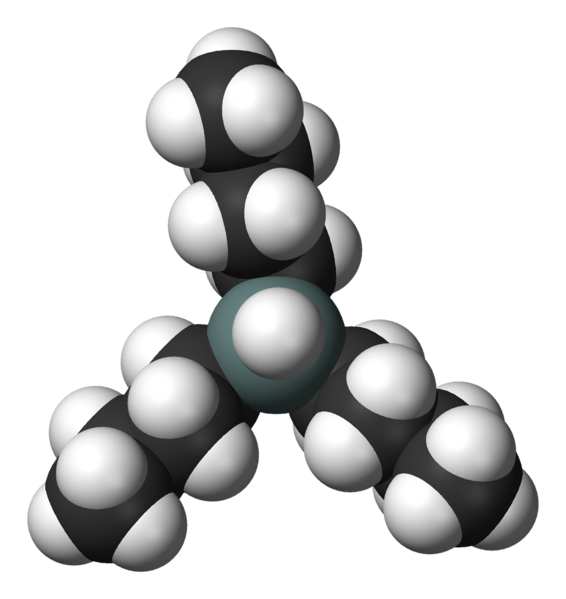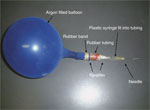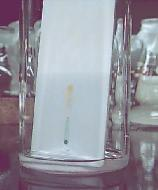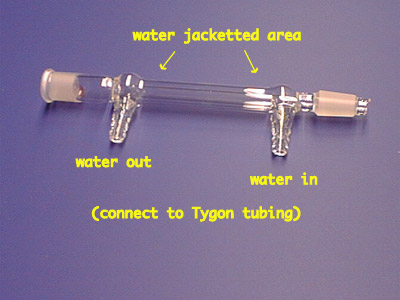
Syringe– small device, used to transfer small amounts of liquids or gases. A needle is sometimes attached to the end.

Bu3SnH – Oxytin hydride that is relatively useful for radical reactions because of the weak bond between tin and hydrogen that can be homolytically cleaved.

Argon balloon – An argon balloon is a device filled with argon that helps to maintain a temporary inert pressure in the system.

TLC plate- Silicon Plate used to find the relative polarity of products in different solvents. This is done by placing a small drop of the product at the bottom of the plate and placing it in a jar of solvent. The solvent will travel up the plate. Products of different polarities will travel different distances up the plate.

Condenser– a piece of laboratory glassware used to cool hot vapors or liquids. It has a tube running through its center where the hot fluids go and usually water running on the outside to cool the inner tube.
